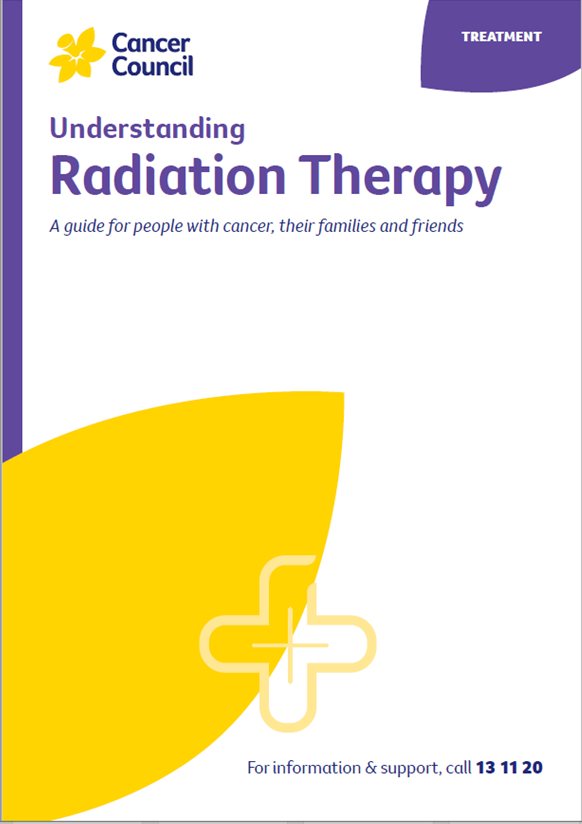- Home
- Cancer Information
- Cancer treatment
- Radiation therapy
- Brachytherapy
- Types of brachytherapy
Types of brachytherapy
Depending on the type of cancer and your radiation oncologist’s recommendation, the radioactive sources may be placed in your body for a limited time or permanently.
Learn more about:
Temporary brachytherapy
In temporary brachytherapy, you may have one or more treatment sessions to deliver the full dose of radiation prescribed by the radiation oncologist. The radioactive source is inserted using applicators such as thin plastic tubes (catheters) or cylinders. The source is removed at the end of each treatment session. The applicator may be removed at the same time or left in place until after the final session.
Temporary brachytherapy is mostly used for prostate cancers and gynaecological cancers (such as cervical and vaginal cancers).
Safety precautions for temporary brachytherapy
While the radioactive source is in place, some radiation may pass outside your body. For this reason, hospitals take certain safety precautions to avoid exposing staff and visitors to radiation. Staff will explain any restrictions before you start brachytherapy treatment.
If you have temporary brachytherapy, once the source is removed, you are not radioactive and there is no risk to other people. You won’t have to take any further precautions.
High-dose-rate brachytherapy – This will be given for a few minutes at a time during multiple sessions. The radiation therapists will leave the room briefly during the treatment, but will be able to see and talk to you from another room. You may be able to have this treatment as an outpatient.
Low-dose-rate or pulsed-dose-rate brachytherapy – The radioactive sources will deliver radiation over 1–6 days. For these types of brachytherapy, you will stay in hospital for a few days and will be in a dedicated treatment room on your own. This room is close to the main hospital ward – you can use an intercom to talk with staff and visitors outside the room. If you have concerns about being alone, talk to the treatment team.
For low dose or pulsed-dose-rate brachytherapy, precautions may include:
- hospital staff only coming into the room for short periods of time
- limiting visitors during treatment
- visitors sitting away from you
- avoiding contact with children under 16 and pregnant women.
Permanent brachytherapy
In permanent low-dose-rate brachytherapy, radioactive seeds about the size of a grain of rice are put inside special needles and implanted into the body while you are under general anaesthetic. The needles are removed, and the seeds are left in place to gradually decay.
As the seeds decay, they slowly release small amounts of radiation over weeks or months. They will eventually stop releasing radiation, but they will not be removed. Low-dose-rate brachytherapy is often used to treat early-stage prostate cancers.
Safety precautions for permanent brachytherapy
If you have permanent brachytherapy, you will be radioactive for a short time after the seeds are inserted. The radiation is usually not strong enough to be harmful to people around you, so it is safe to go home. However, you may need to avoid close contact with young children and pregnant women for a short time – your treatment team will advise you of any precautions to take. You will normally be able to return to your usual activities a day or two after the seeds are inserted.
For the first few weeks after the seeds were implanted, I thought this is a doddle. Then suddenly, I started getting this really urgent need to urinate. That gave me a few weeks of disturbed sleep, but the urgency gradually eased off and I thought this is pretty good. Now after three years, there’s no sign of the cancer and I’ve had no long-term side effects.
Derek
Podcast: Making Treatment Decisions
Listen to more episodes from our podcast for people affected by cancer
More resources
Prof June Corry, Radiation Oncologist, GenesisCare, St Vincent’s Hospital, VIC; Prof Bryan Burmeister, Senior Radiation Oncologist, GenesisCare Fraser Coast, Hervey Bay Hospital, and The University of Queensland, QLD; Sandra Donaldson, 13 11 20 Consultant, Cancer Council WA; Jane Freeman, Accredited Practising Dietitian (Cancer specialist), Canutrition, NSW; Sinead Hanley, Consumer; David Jolly, Senior Medical Physicist, Icon Cancer Centre Richmond, VIC; Christine Kitto, Consumer; A/Prof Grace Kong, Nuclear Medicine Physician, Peter MacCallum Cancer Centre, VIC; A/Prof Sasha Senthi, Radiation Oncologist, The Alfred Hospital and Monash University, VIC; John Spurr, Consumer; Chris Twyford, Clinical Nurse Consultant, Radiation Oncology, Cancer Rapid Assessment Unit and Outpatients, Canberra Hospital, ACT; Gabrielle Vigar, Nurse Unit Manager, Radiation Oncology/Cancer Outpatients, Cancer Program, Royal Adelaide Hospital, SA.
View the Cancer Council NSW editorial policy.
View all publications or call 13 11 20 for free printed copies.
Need to talk?
Support services
Coping with cancer?
Ask a health professional or someone who’s been there, or find a support group or forum
Need legal and financial assistance?
Pro bono legal and financial matters, no interest loans or help with small business
Cancer information
Deciding on specialist care
How to find and choose a surgeon, oncologist or other specialist
Patient rights and responsibilities
What you can reasonably expect from your health care professionals

